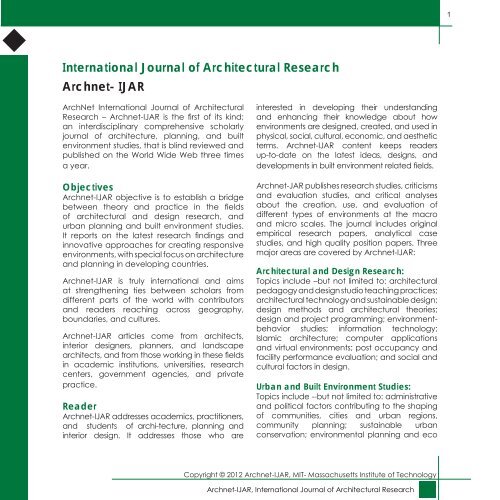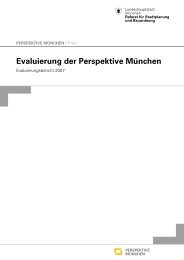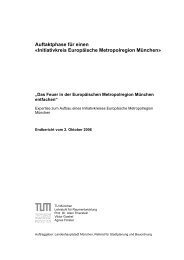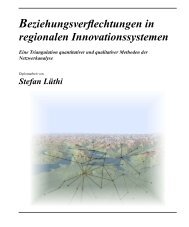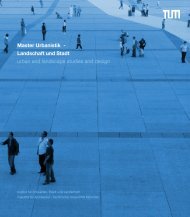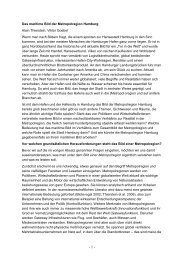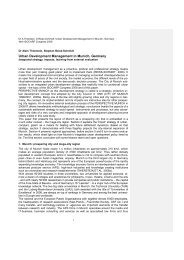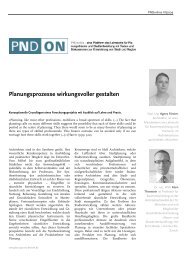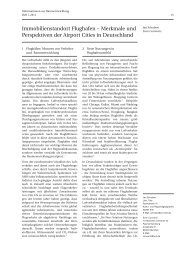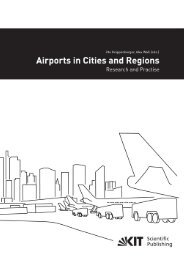0.6-1-Cover and Table of Contents-pp 0-05.indd - Raumentwicklung ...
0.6-1-Cover and Table of Contents-pp 0-05.indd - Raumentwicklung ...
0.6-1-Cover and Table of Contents-pp 0-05.indd - Raumentwicklung ...
You also want an ePaper? Increase the reach of your titles
YUMPU automatically turns print PDFs into web optimized ePapers that Google loves.
International Journal <strong>of</strong> Architectural Research<br />
Archnet- IJAR<br />
ArchNet International Journal <strong>of</strong> Architectural<br />
Research – Archnet-IJAR is the first <strong>of</strong> its kind;<br />
an interdisciplinary comprehensive scholarly<br />
journal <strong>of</strong> architecture, planning, <strong>and</strong> built<br />
environment studies, that is blind reviewed <strong>and</strong><br />
published on the World Wide Web three times<br />
a year.<br />
Objectives<br />
Archnet-IJAR objective is to establish a bridge<br />
between theory <strong>and</strong> practice in the fields<br />
<strong>of</strong> architectural <strong>and</strong> design research, <strong>and</strong><br />
urban planning <strong>and</strong> built environment studies.<br />
It reports on the latest research findings <strong>and</strong><br />
innovative a<strong>pp</strong>roaches for creating responsive<br />
environments, with special focus on architecture<br />
<strong>and</strong> planning in developing countries.<br />
Archnet-IJAR is truly international <strong>and</strong> aims<br />
at strengthening ties between scholars from<br />
different parts <strong>of</strong> the world with contributors<br />
<strong>and</strong> readers reaching across geography,<br />
boundaries, <strong>and</strong> cultures.<br />
Archnet-IJAR articles come from architects,<br />
interior designers, planners, <strong>and</strong> l<strong>and</strong>scape<br />
architects, <strong>and</strong> from those working in these fields<br />
in academic institutions, universities, research<br />
centers, government agencies, <strong>and</strong> private<br />
practice.<br />
Reader<br />
Archnet-IJAR addresses academics, practitioners,<br />
<strong>and</strong> students <strong>of</strong> archi-tecture, planning <strong>and</strong><br />
interior design. It addresses those who are<br />
interested in developing their underst<strong>and</strong>ing<br />
<strong>and</strong> enhancing their knowledge about how<br />
environments are designed, created, <strong>and</strong> used in<br />
physical, social, cultural, economic, <strong>and</strong> aesthetic<br />
terms. Archnet-IJAR content keeps readers<br />
up-to-date on the latest ideas, designs, <strong>and</strong><br />
developments in built environment related fields.<br />
Archnet-JAR publishes research studies, criticisms<br />
<strong>and</strong> evaluation studies, <strong>and</strong> critical analyses<br />
about the creation, use, <strong>and</strong> evaluation <strong>of</strong><br />
different types <strong>of</strong> environments at the macro<br />
<strong>and</strong> micro scales. The journal includes original<br />
empirical research papers, analytical case<br />
studies, <strong>and</strong> high quality position papers. Three<br />
major areas are covered by Archnet-IJAR:<br />
Architectural <strong>and</strong> Design Research:<br />
Topics include –but not limited to: architectural<br />
pedagogy <strong>and</strong> design studio teaching practices;<br />
architectural technology <strong>and</strong> sustainable design;<br />
design methods <strong>and</strong> architectural theories;<br />
design <strong>and</strong> project programming; environmentbehavior<br />
studies; information technology;<br />
Islamic architecture; computer a<strong>pp</strong>lications<br />
<strong>and</strong> virtual environments; post occupancy <strong>and</strong><br />
facility performance evaluation; <strong>and</strong> social <strong>and</strong><br />
cultural factors in design.<br />
Urban <strong>and</strong> Built Environment Studies:<br />
Topics include --but not limited to: administrative<br />
<strong>and</strong> political factors contributing to the shaping<br />
<strong>of</strong> communities, cities <strong>and</strong> urban regions,<br />
community planning; sustainable urban<br />
conservation; environmental planning <strong>and</strong> eco<br />
Copyright © 2012 Archnet-IJAR, MIT- Massachusetts Institute <strong>of</strong> Technology<br />
Archnet-IJAR, International Journal <strong>of</strong> Architectural Research<br />
1


